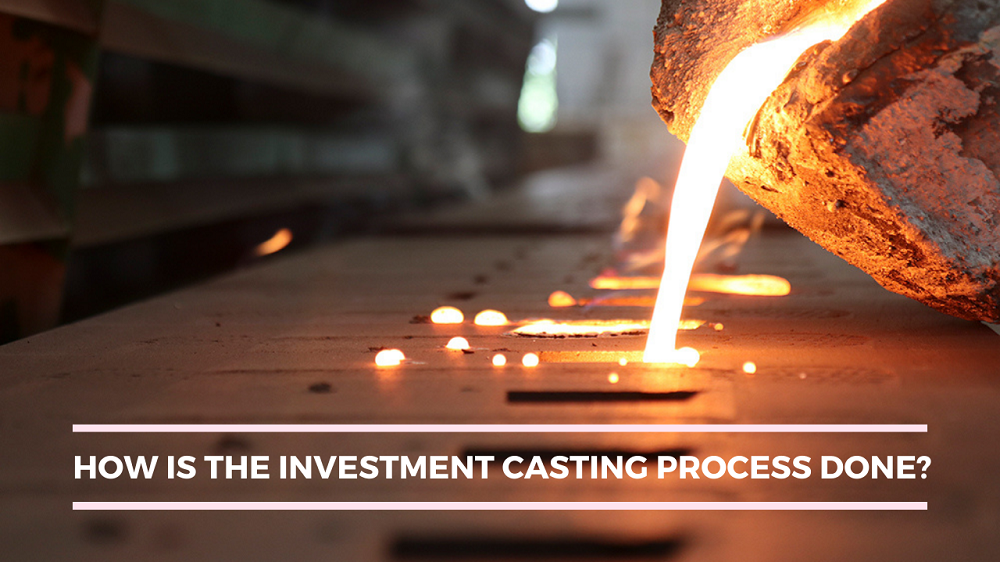History of Investment Casting
Investing in ceramics is a manufacturing technique that involves coating a wax design with a refractory ceramic substance before casting it. Once the ceramic material has been solidified, the interior geometry of the material takes on the form of the mold.
Investment casting was first used more than 5500 years ago and maybe traced back to both ancient Egypt and China as the source of its invention. Among the items that may be produced in the industry using this technique are dental fixtures, gears, cams, ratchets, jewels, turbine blades, machinery components, and other parts with complicated geometrical relationships.
Factors such as design criteria, pricing, and manufacturing feasibility are taken into consideration when determining which casting method is best appropriate for a certain product. This post about investment casting is designed to assist you in making a well-informed choice about your casting project.
Investment casting creates highly accurate components while reducing material waste, energy consumption, and subsequent machining requirements. It may also be used to guarantee the manufacturing of very complex components. As a result, design engineers find the investment casting process to be very beneficial. Using the right combination of automation and human control, you may create a production process that eliminates the need for time-consuming tooling while still producing castings with excellent dimensional accuracy.
Investment Casting India employs cutting-edge technology and follows stringent manufacturing guidelines, ensuring that clients get high-quality castings for a variety of applications. At this location, they use Rapid Prototyping techniques, create wax molds and produce them, develop optimum casting technology, and offer heat treatment followed by precision machining.
What exactly is the term “investment casting”?
The word “investment” refers to the process of applying artistic slurry on the surface of the water. Generally speaking, there are two basic techniques for encasing wax patterns in high-temperature earthenware manufacturing, which results in the creation of a form that can contain liquid metal. One method involves flowing ceramic slurry around a wax tree gathering that is contained inside a container, and the other involves plunging the wax into the slurry and applying the slurry in layers to the wax tree.
This is referred to as investing because it occurs when an item is submerged in a fluid and the fluid stays on the surface of the object. This is also where the term investing originated. As a result, the technique is often referred to as the Lost Wax casting process, which represents the fact that the examples are dispensed with, as well as precision casting, which indicates the accuracy and exquisite detail of the castings themselves.
Modern foundries employ cutting-edge technology and machining equipment to improve the reliability and effectiveness of the casting process. This includes the use of advanced refractory materials, waxes, computerized processes, and quality control equipment, all of which are still based on the same underlying science as in the past.
Advantages of Investment Casting
1. Investment casting has several benefits over other methods of producing a component that you developed. One of these advantages is the capacity to create more complex shapes, including forms with undercuts, with less effort. Aside from that, the investment casting method produces a very smooth surface since it does not need the use of a separating line, which is something that would be impossible to achieve with other procedures.
2. The precision of investment casting is unrivaled in the industry. Even components with greater accuracy may be cast with little to no machining or detailing needed after the casting process. Furthermore, since the final item will not need welding or assembly, you will save on both time and money compared to other techniques of construction.
3. With the development of new alloys that allow for the casting of increasingly complicated components, the procedure of assembling multiple sections to get the intricate form may be avoided altogether. This not only saves time and money but also reduces the likelihood that a mistake will occur during the process of assembling the components.
4. One of the most significant benefits of investment casting is that it allows for the production of a highly diverse range of goods across a broad range of sectors. In contrast to other casting techniques, which have difficulties creating certain patterns or are unable to create them at all, this flexibility is a significant advantage. Furthermore, since investment casting can be done using a variety of metals and alloys, designers do not have to be concerned about the manufacturing of the casting they have imagined.
With extensive expertise in the investment casting process and a dedication to continual development and automation, Investment Casting India has well-developed procedures that enable them to achieve great consistency in their castings. They will be with you every step of the process, from the initial phases of design to ensure that your components are of high quality and competitively priced.

